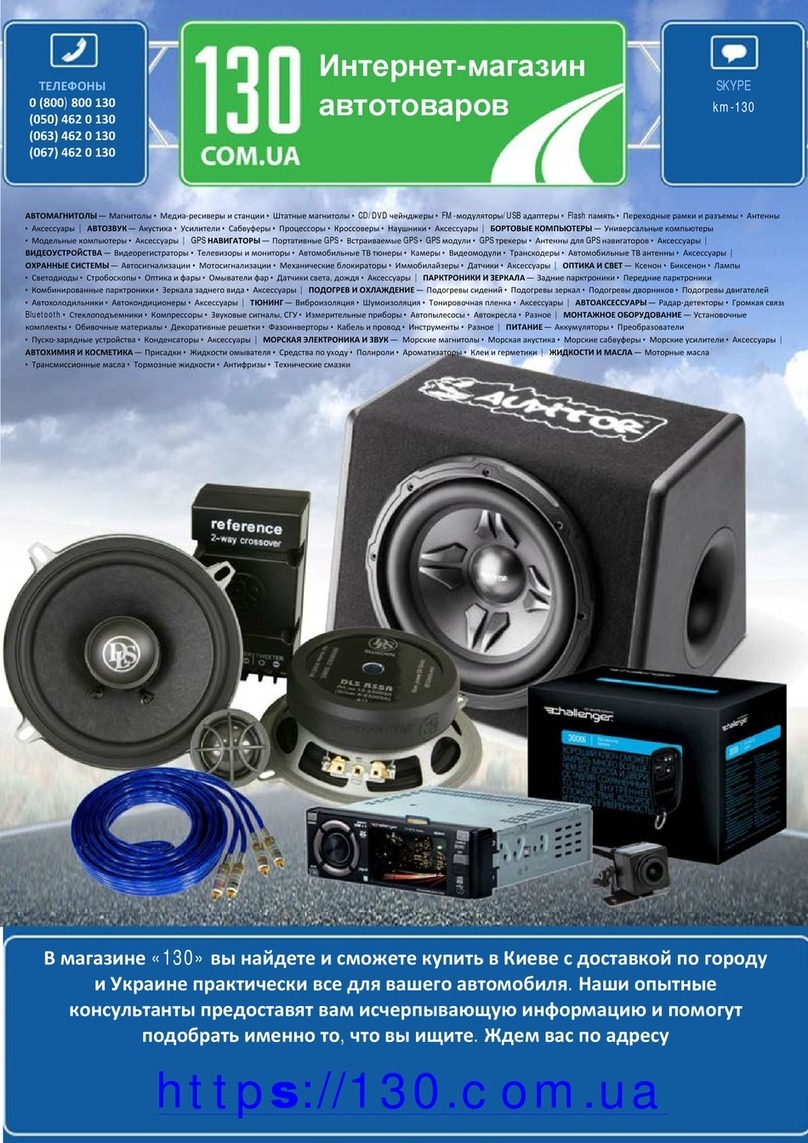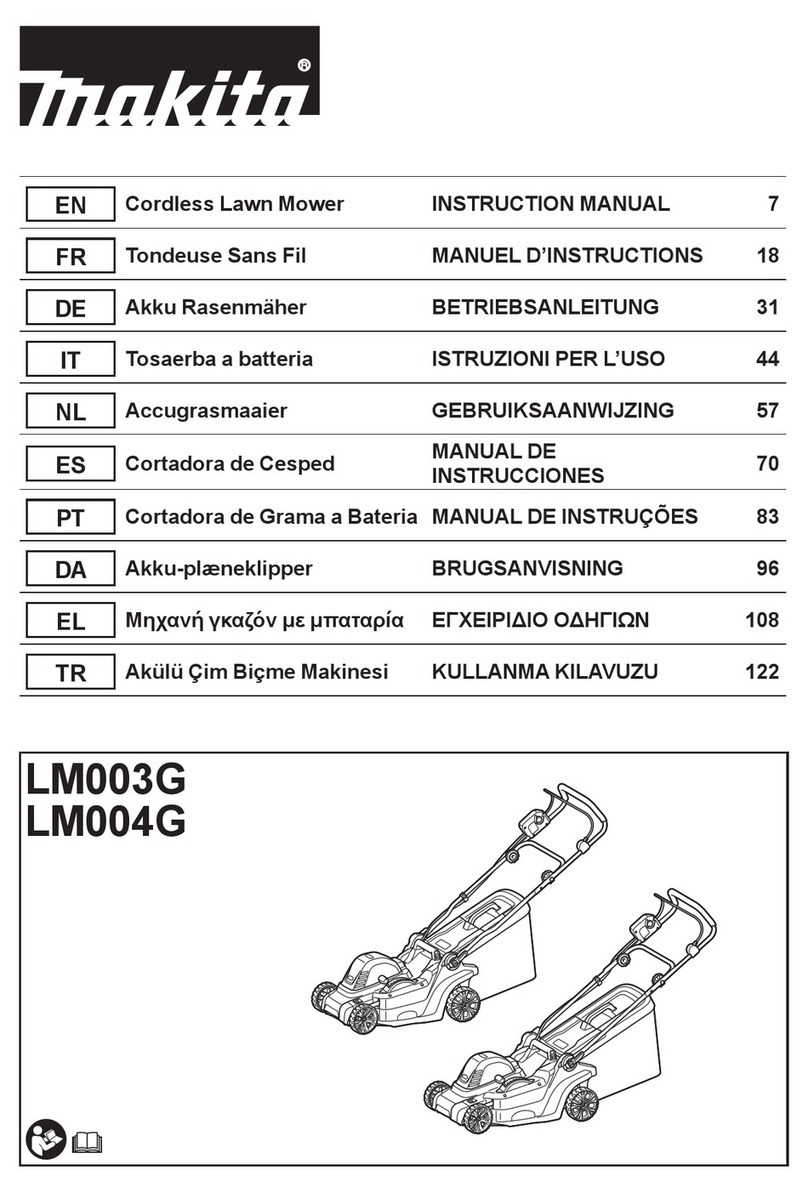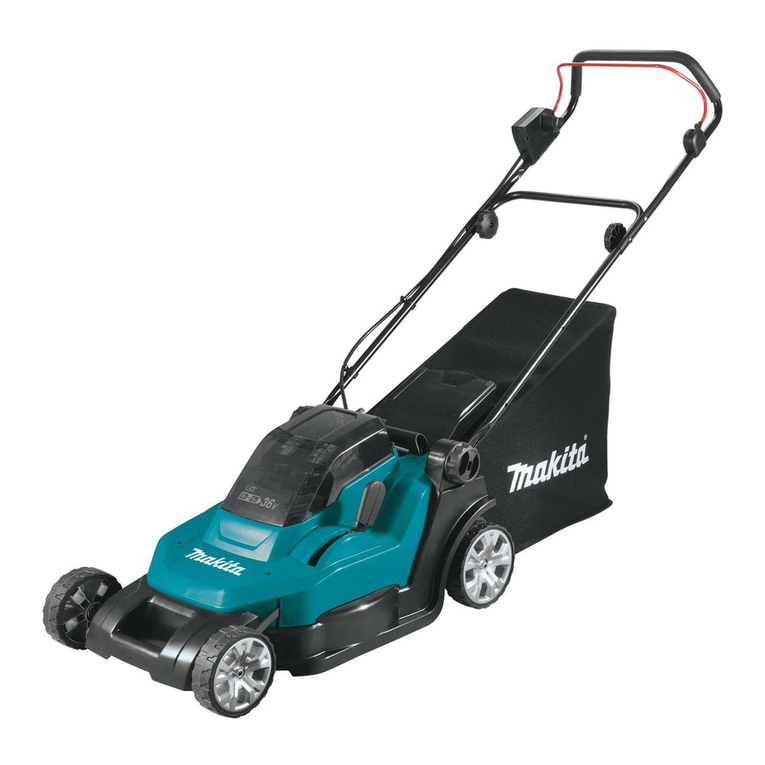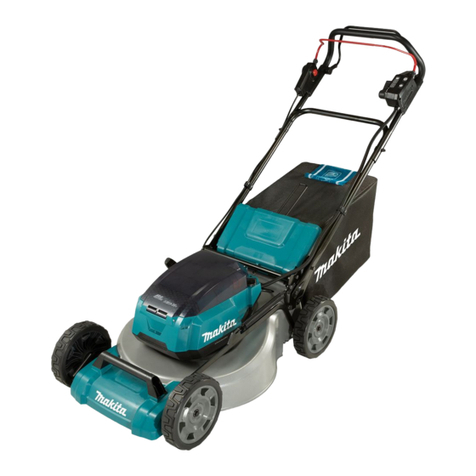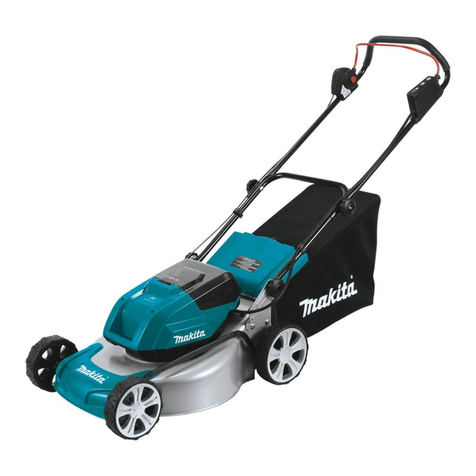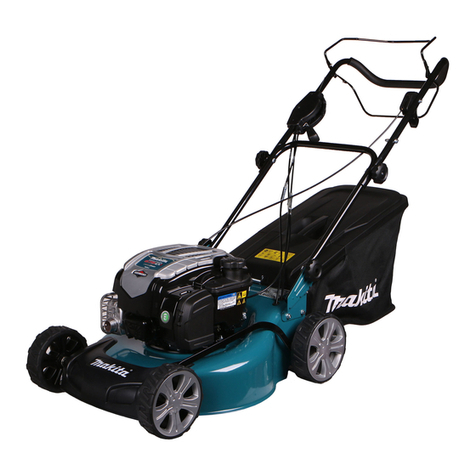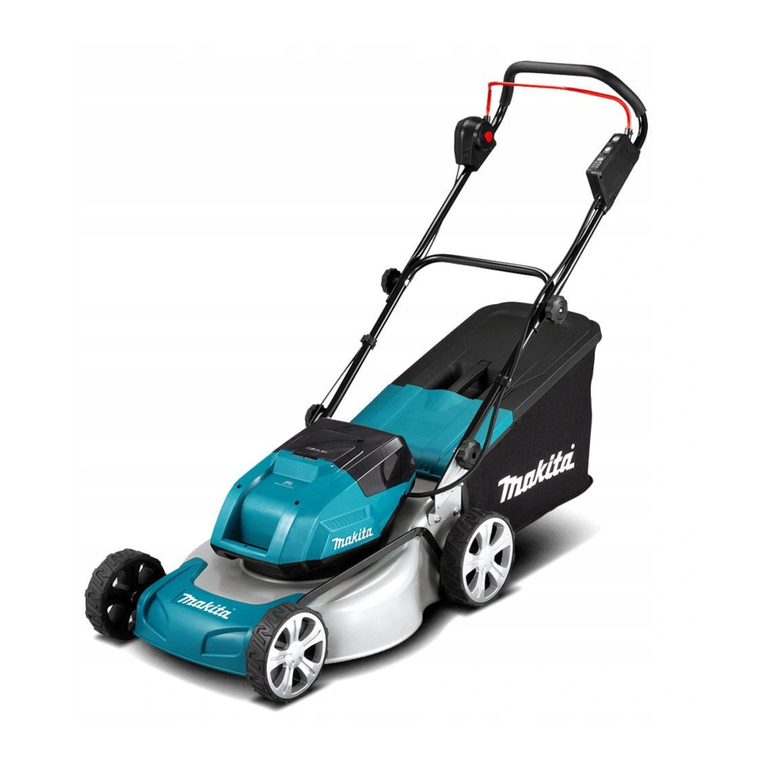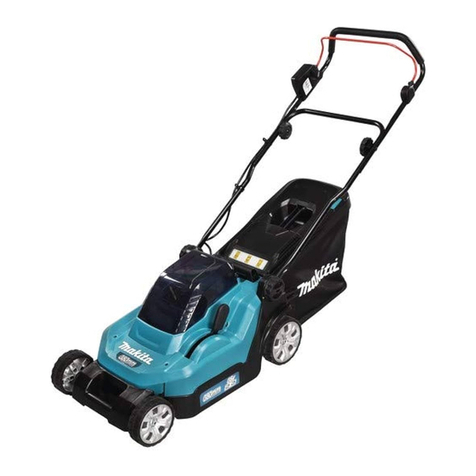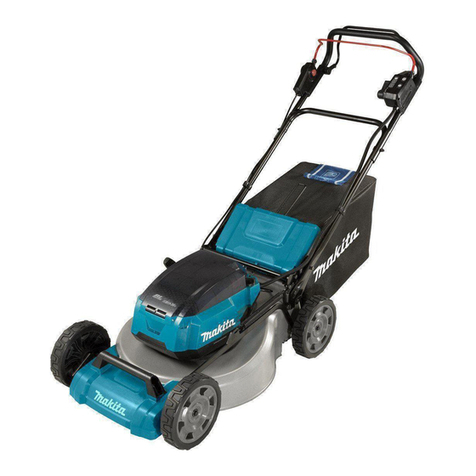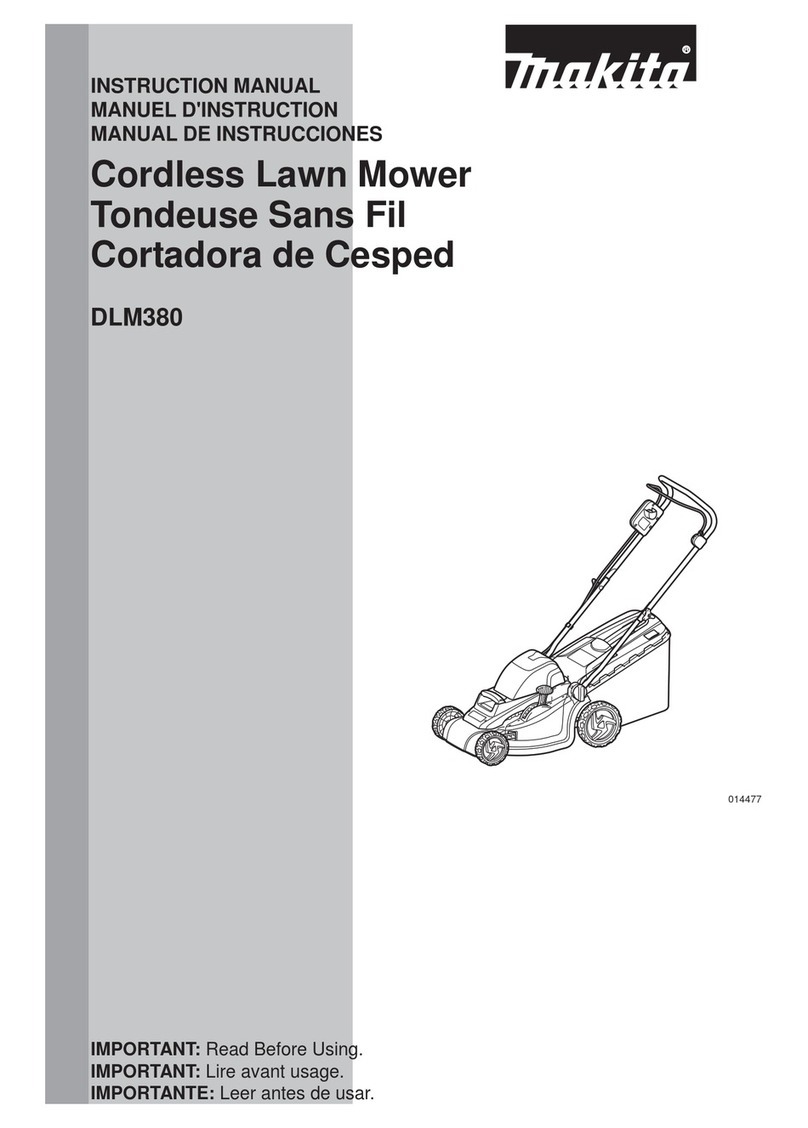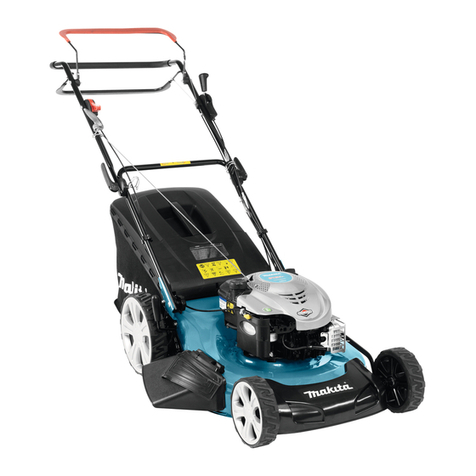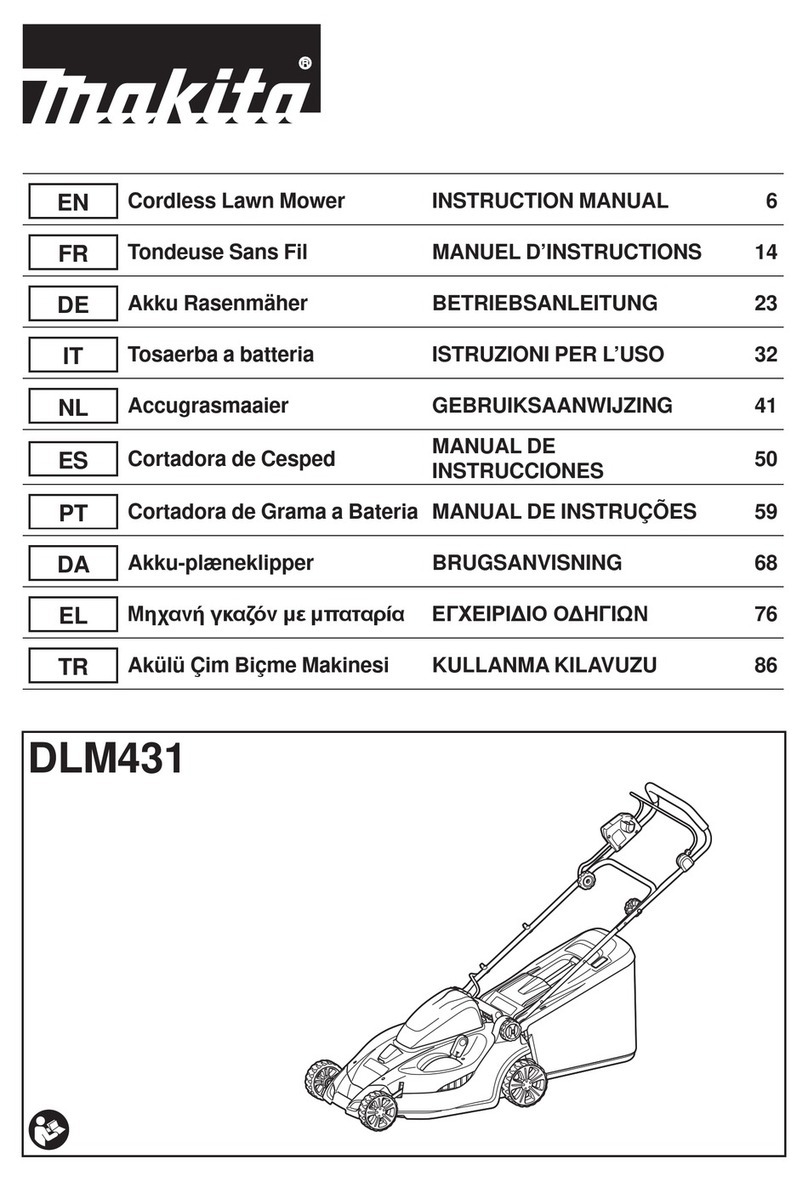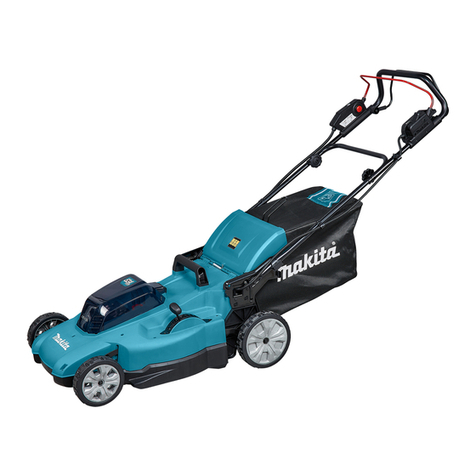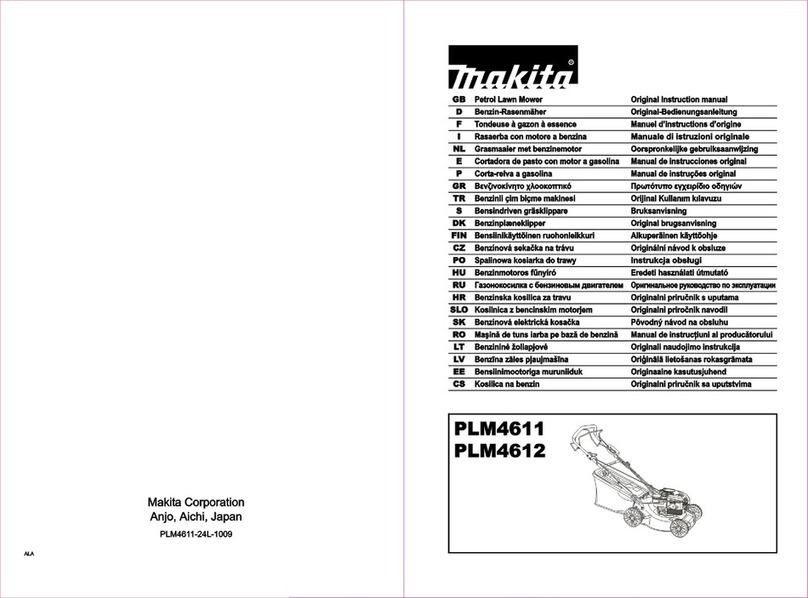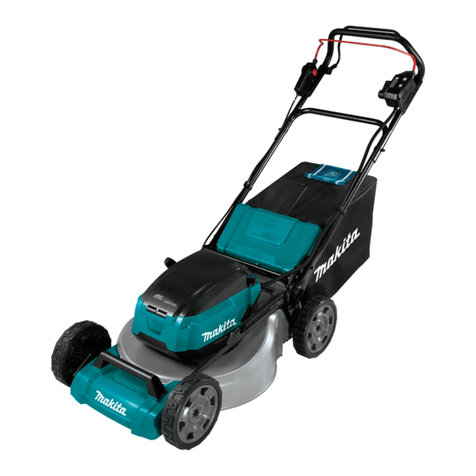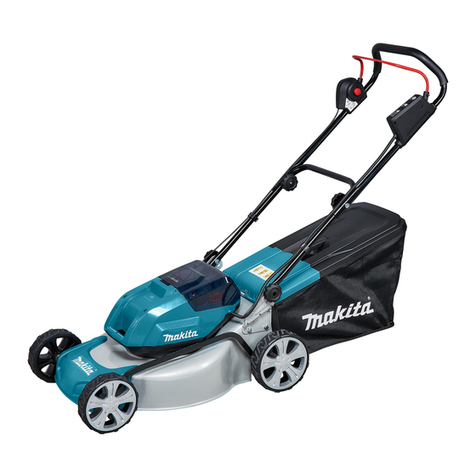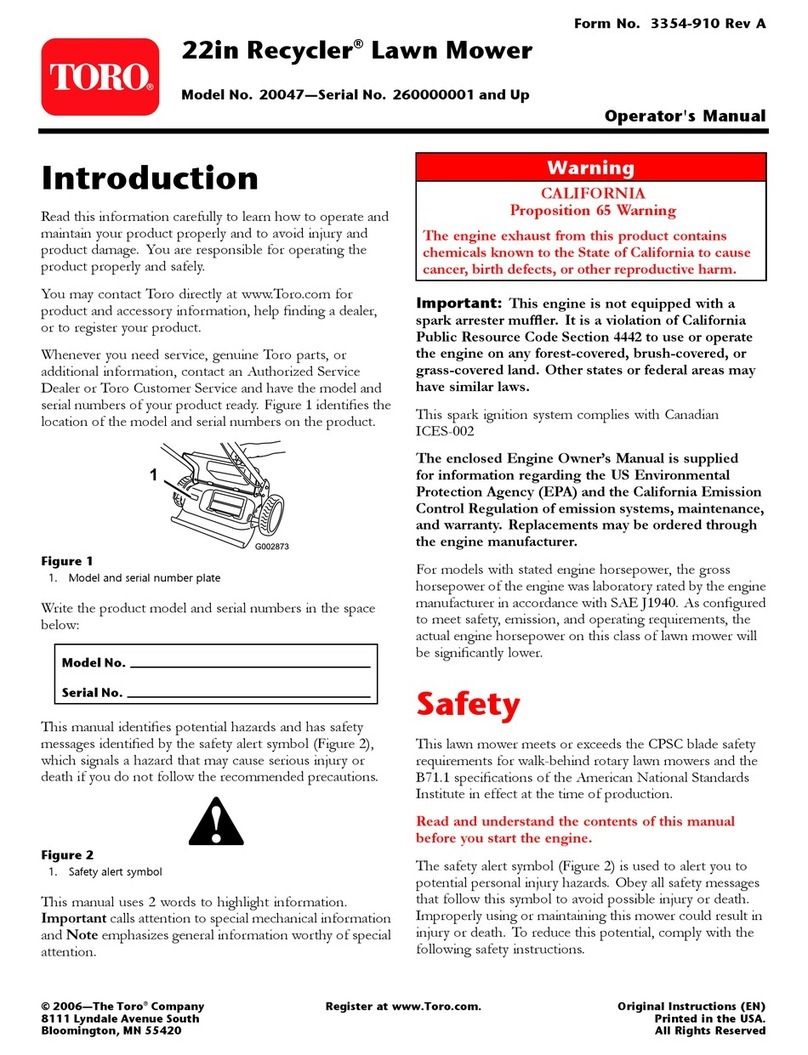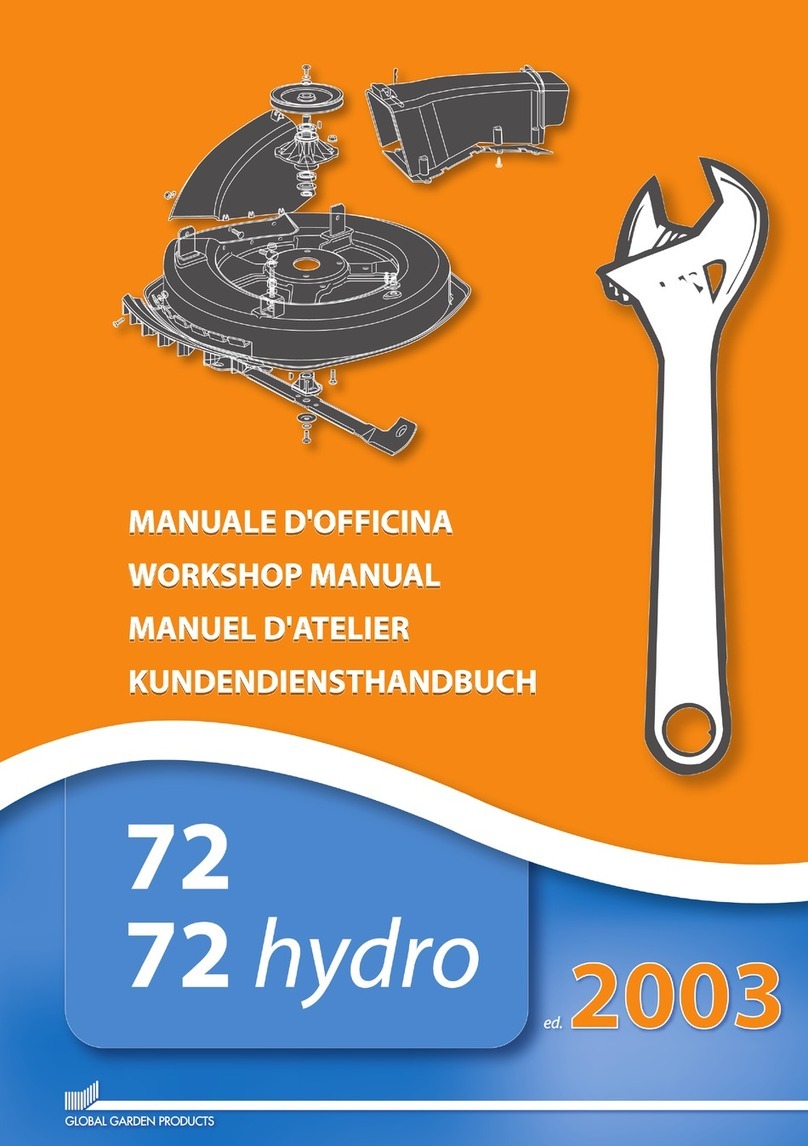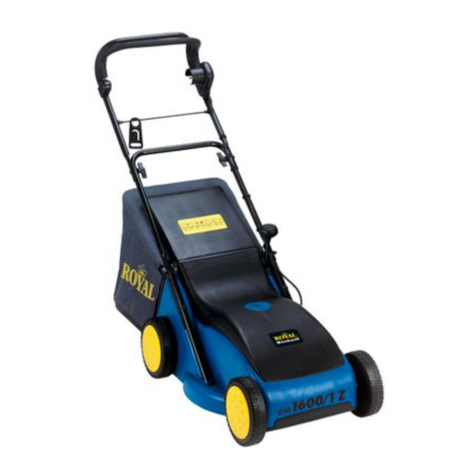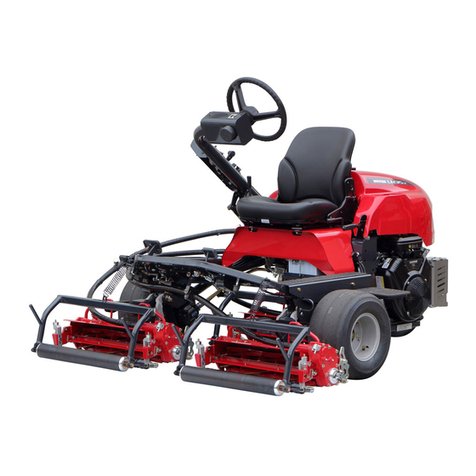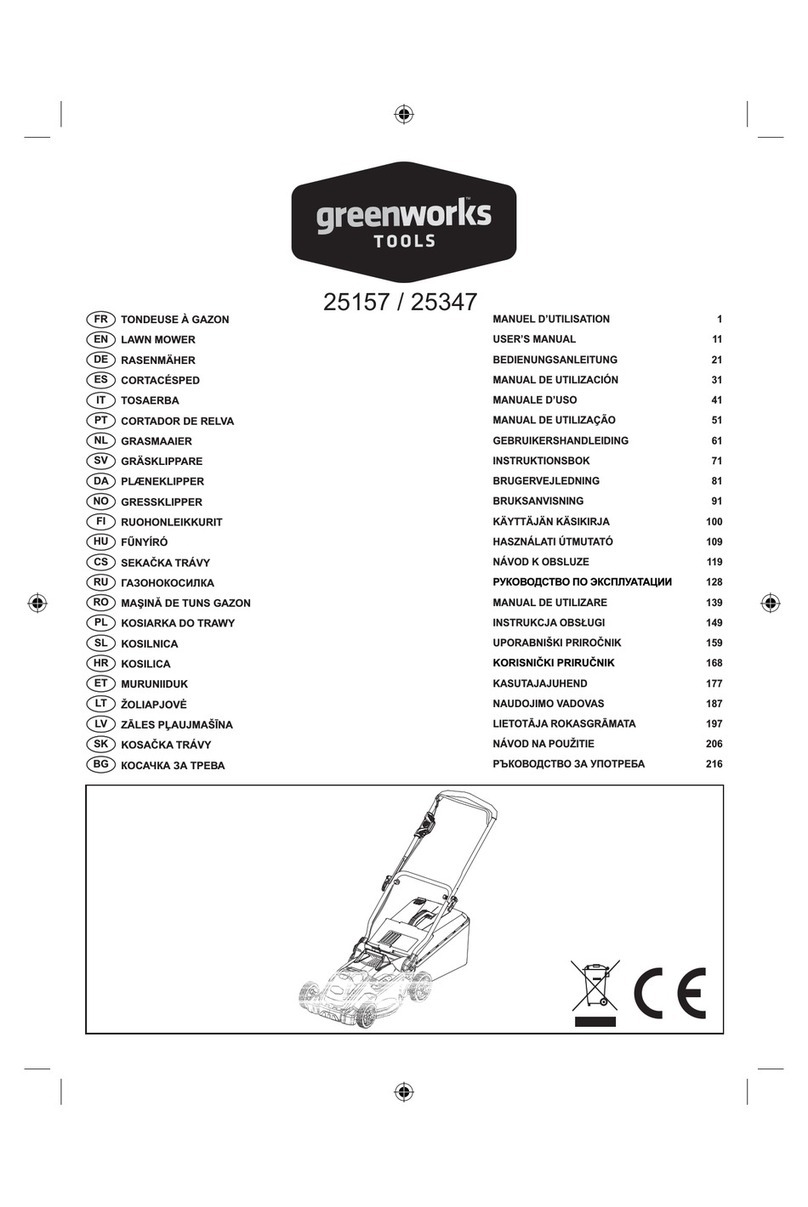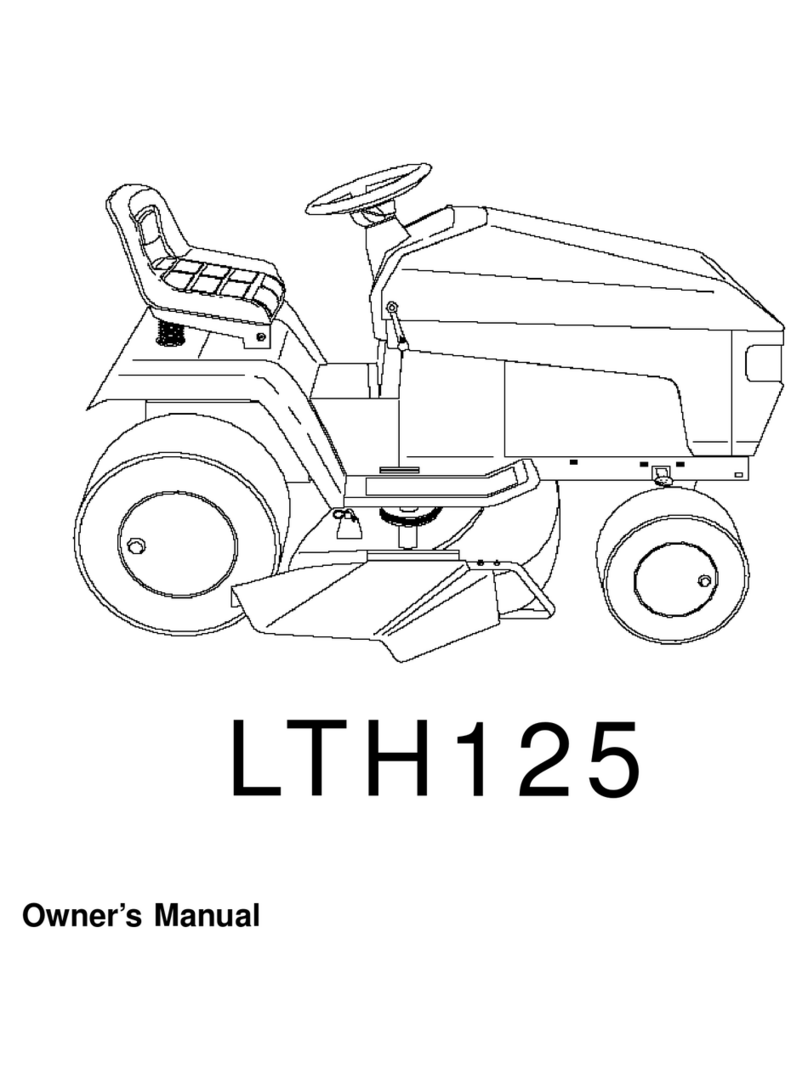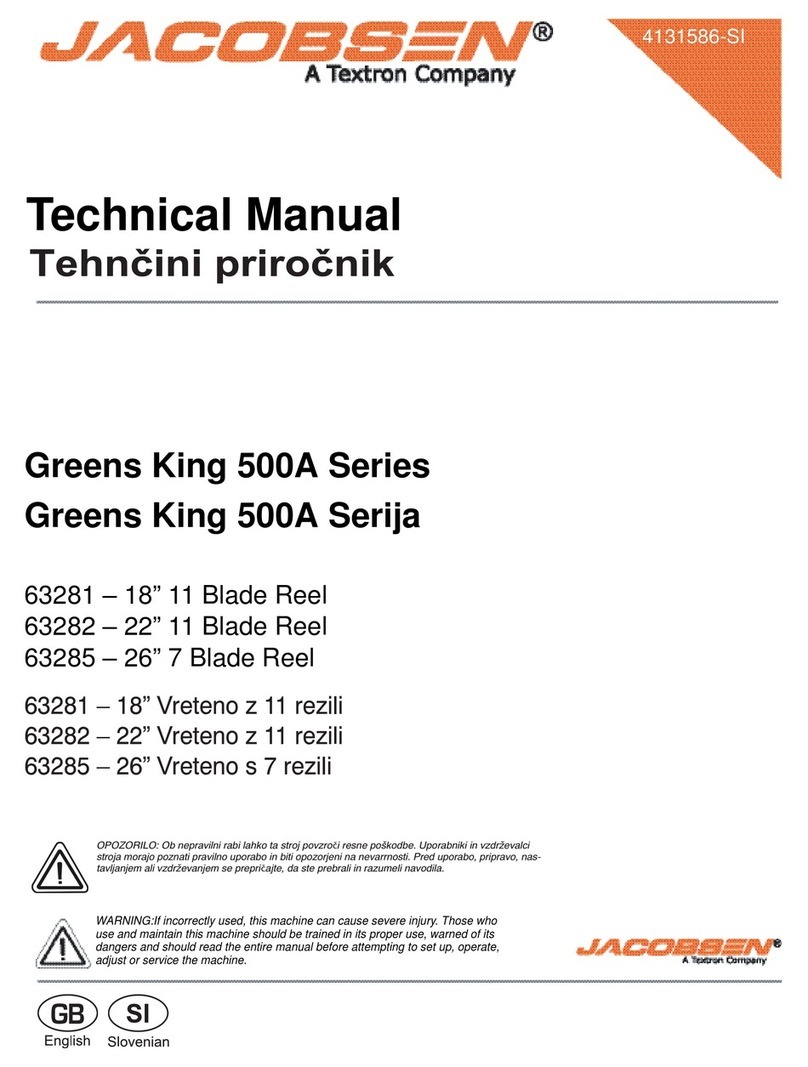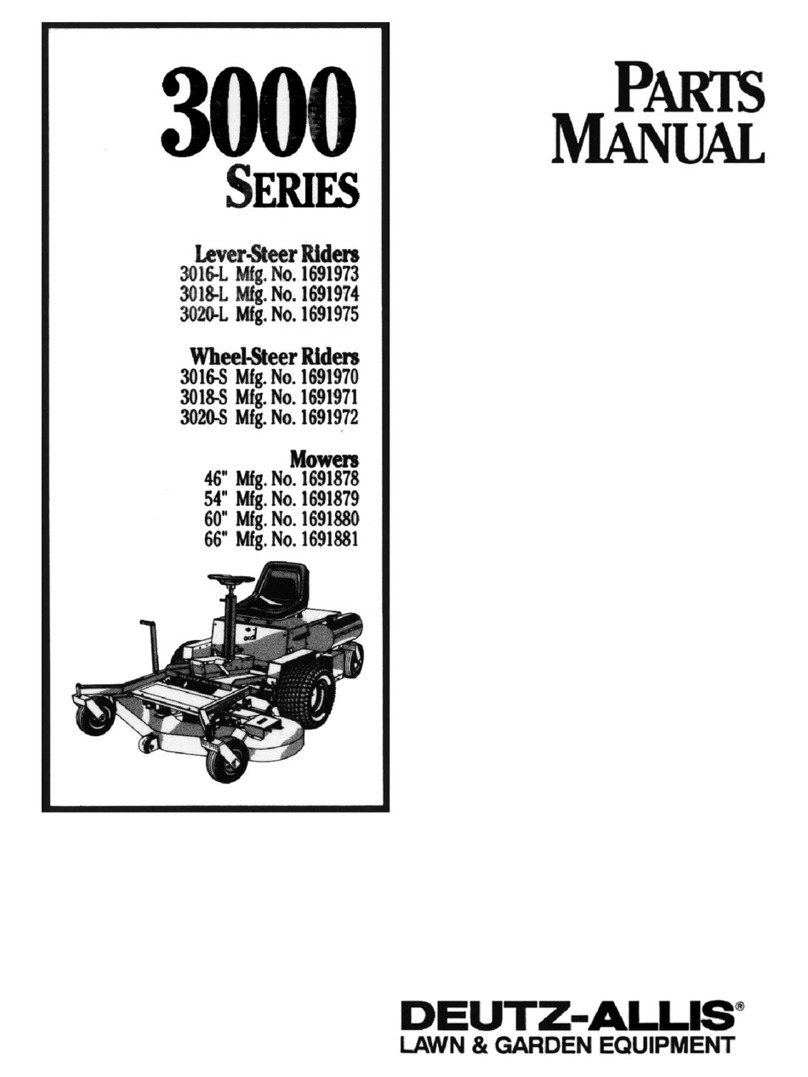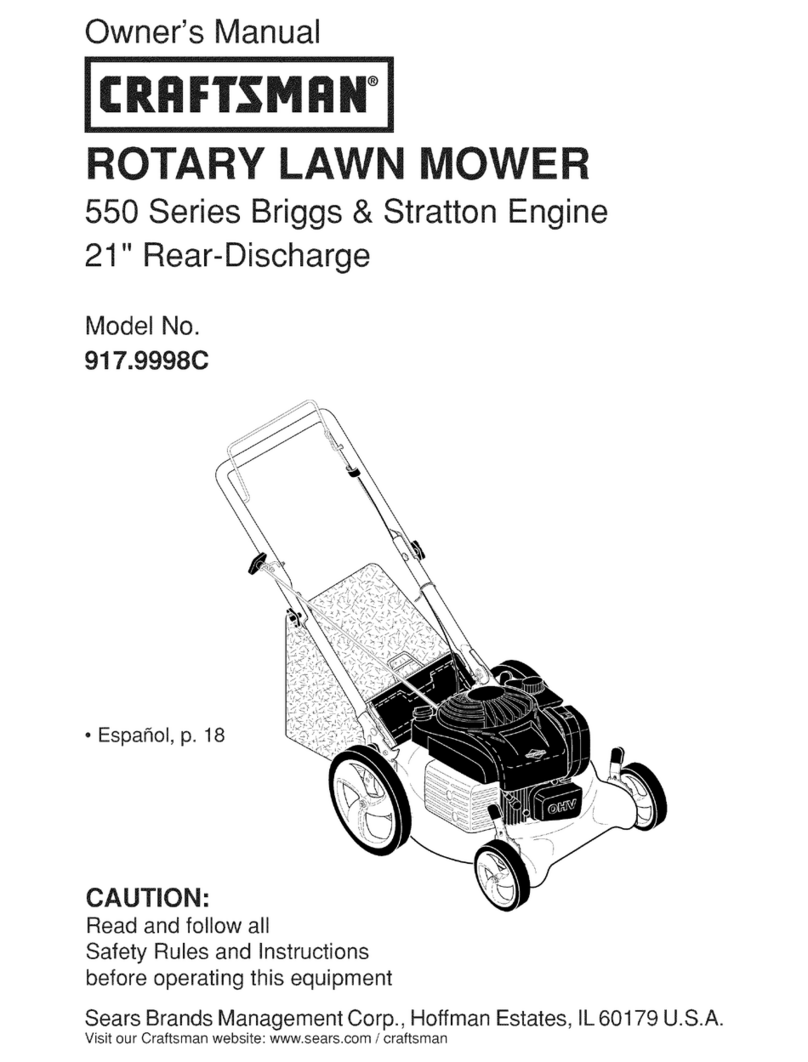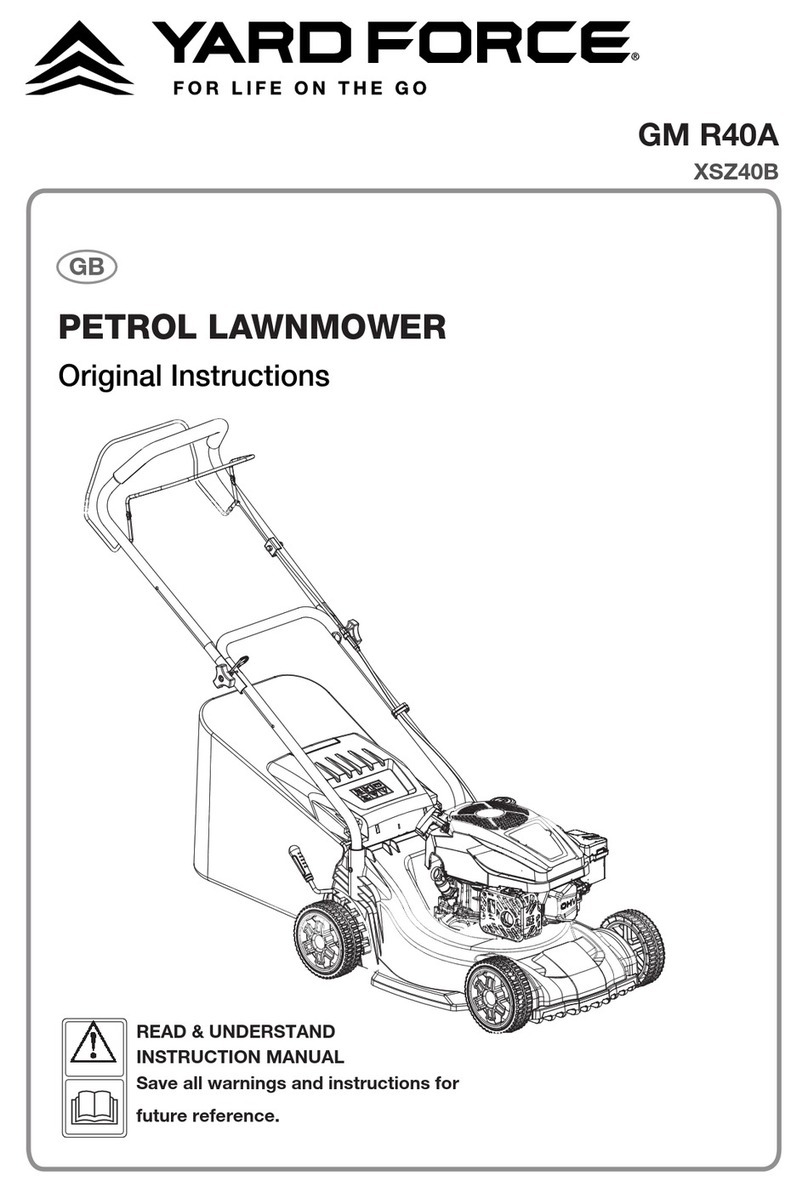
3ENGLISH
12. Maintain Lawn Mower With Care - Keep cutting
edges sharp and clean for best and safest per-
formance. Follow instructions for lubricating and
changing accessories. Inspect lawn mower cord
periodically and if damaged, have it repaired by
an authorized service facility. Keep handles dry,
clean, and free from oil and grease.
13. Keep machine free of grass, leaves, or other
debris build up. Keep guards in place and in
working order.
14. Keep blades sharp.
15. Keep hands and feet away from cutting area.
Keep clear of the discharge opening at all
times.
16. Objects struck by the lawn mower blade can
cause severe injuries to persons. The lawn
should always be carefully examined and
cleared of all objects prior to each mowing.
Stay behind the handle when the engine
(motor) is running.
17. If the mower strikes a foreign object, follow
these steps:
• Stop the mower. Release the switch. Wait
until the blade comes to a complete stop.
• Remove the lock key and the battery
cartridge.
• Inspect the mower for any damage.
• Repair any damage before restarting and
operating the mower. Replace the blade if it
is damaged in any way.
18. Use identical replacement blades only.
19. This cutting machine is capable of amputating
hands and feet and throwing objects. Failure
to observe the following safety instructions
could result in serious injury or death.
20. Only allow responsible adults, who are familiar
with the instruction, to operate the mower.
21. Be sure the area is clear of other people before
mowing. Stop mower if anyone enters the area.
22. Never direct discharged material toward
anyone. Avoid discharging material against a
wall or obstruction. Material may ricochet back
toward the operator. Stop the blade when crossing
gravel surfaces.
23. Do not pull the mower backwards unless
absolutely necessary. When you are compelled
to back the mower from a fence or other similar
obstruction, look down and behind before and
while moving backwards.
24. Release switch lever and wait for blade rota-
tion to stop before crossing driveways, walks,
roads and any gravel-covered areas. Also
remove the lock key if you leave it, reach to pick
up or remove something out of your way, or for
any other reason that may distract you from what
you are doing.
25. Do not operate machine without the entire
grass catcher, discharge guard, rear guard, or
other safety protective devices in place and
working.
26. Stop the motor and remove the lock key when-
ever you leave the equipment, before cleaning
the mower or unclogging the chute and mak-
ing any repairs or inspections.
27.
Shut the motor o and wait until the blade comes
to a complete stop before removing the grass
catcher. Beware that the blades coast after turn o.
28. Mow only in daylight or good articial light.
29. If the equipment should start to vibrate unusu-
ally, stop the motor and check immediately
for the cause. Vibration is generally a warning of
trouble.
30. Do not insert the lock key into mower until it is
ready to be used.
31. Don't grasp the exposed cutting blades or
cutting edges when picking up or holding the
appliance.
32. Check the blades or blade bolts carefully for
cracks or damage before operation. Replace
cracked or damaged blades or blade bolts
immediately.
33. Never attempt to make wheel height adjust-
ments while mower is running.
34. Check the grass basket frequently for wear or
deterioration. For storage, always make sure
the grass basket is empty. Replace a worn grass
basket with a new factory replacement one for
safety.
35. Check grass basket components and the
discharge guard frequently and replace with
manufacturer’s recommended parts, when
necessary.
36. Mow across the face of slopes, never up and
down. Exercise extreme caution when chang-
ing direction on slopes. Do not mow exces-
sively steep slopes. Poor footing could cause a
slip and fall accident.
37. Watch for holes, ruts, bumps, rocks, or other
hidden objects. Uneven terrain could cause a slip
and fall accident. Tall grass can hide obstacles.
38. Do not mow on wet grass or excessively steep
slopes. Poor footing could cause a slip and fall
accident.
39. Check the blade mounting bolt at frequent
intervals for proper tightness.
40. Keep all nuts, bolts, and screws tight to
be sure the equipment is in safe working
condition.
41. Never remove or tamper with safety devices.
Check their proper operation regularly. Never
do anything to interfere with the intended
function of a safety device or to reduce the
protection provided by a safety device.
42. Maintain or replace safety and instruction
labels, as necessary.
43. Battery tool use and care
• Recharge only with the charger specied
by the manufacturer. A charger that is
suitable for one type of battery cartridge may
create a risk of re when used with another
battery cartridge.
• Do not charge lawn mower in rain, or in
wet locations.
• When replacing batteries, all batteries
should be replaced at the same time.
Mixing fresh and discharged batteries could
increase internal cell pressure and rupture
the discharged battery.
